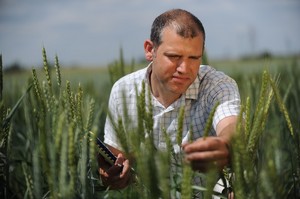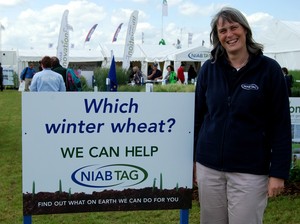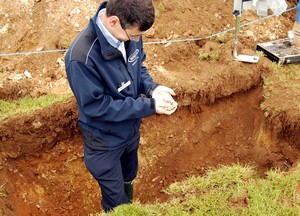- About
-
Research
- Agronomy and farming systems
-
Agricultural crop research
-
Research projects - agriculture
- About SASSA-SAI
- BioBoost
- Biomass Connect
- CTP for Sustainable Agricultural Innovation
- Climate Ready Beans - workshop presentations (March 2022)
- Crop diversity HPC cluster
- Designing Future Wheat
- Final project workshop
- Get involved
- List of materials
- News and updates
- Partners
- Rustwatch
- The Sentinel Crop Disease Surveillance Network
- The research team
- UK Cereal Pathogen Virulence Survey
- UK wheat varieties pedigree
- Weed management - IWM Praise
- Crop breeding
- Crop characterisation
- Data sciences
- Genetics and pre-breeding
- Plant biotechnology
- Plant pathology and entomology
- Resources
-
Research projects - agriculture
-
Horticultural crop research
-
Research projects - horticulture
- Augmented Berry Vision
- BEESPOKE
- Boosting brassica nutrition in smart growing systems
- CTP for Fruit Crop Research
- Develop user-friendly nutrient demand models
- Egg laying deterrents for spotted wing drosophila
- Enhancing the nutritional quality of tomatoes
- Improving berry harvest forecasts and productivity
- Improving vineyard soil health through groundcover management
- Intelligent growing systems
- Knowledge transfer for sustainable water use
- POME: Precision Orchard Management for Environment
- RASCAL
- STOP-SPOT
- UV-Robot
- Crop science and production systems
- Genetics, genomics and breeding
- Pest and pathogen ecology
- Field vegetables and salad crops
- Plum Demonstration Centre
- The WET Centre
- Viticulture and Oenology
-
Research projects - horticulture
- Crop Science Centre
- Research Projects
-
Services
- Analytical Services
- Business Development
- Commercial trial services
- Membership
- Plant breeding
- Plant characterisation
- Seed certification
-
Training
-
Technical agronomy training
- Advanced crop management of bulb onions
- Advanced crop management of vegetable brassicas
- Advanced nutrient management for combinable crops
- Benefits of cover crops in arable systems
- Best practice agronomy for cereals and oilseed rape
- Developing a Successful Strategy for Spring Crops
- Disease Management and Control in Cereal Crops
- Incorporating SFI options into your rotation
- Protected Environment Horticulture – Best Practice
- Techniques for better pest management in combinable crops
- Crop inspector and seed certification
- Licensed seed sampling
-
Technical agronomy training
- News & Views
- Events
-
Knowledge Hub
- Alternative and break crops
-
Crop genetics
- POSTER: Diversity enriched wheat (2025)
- POSTER: Genetics of wheat flag leaf size (2024)
- POSTER: Wheat yield stability (2024)
- Poster: Traits for future cereal crops (2022)
- POSTER: wild wheat fragment lines (2022)
- POSTER: Improving phenotyping in crop research (2022)
- PRESENTATION: Plant breeding for regen ag
- Poster: Designing Future Wheat (2020)
- Crop nutrition
-
Crop protection
- POSTER: Understanding the hierarchy of black-grass control (2025)
- POSTER: Emerging weed threats (2025)
- POSTER: Disease control in barley (2025)
- Poster: Weed seed predation in regen-ag (2024)
- POSTER: Disease control in winter wheat (2025)
- POSTER: Mode of action (2023)
- POSTER: Inter-row cultivation for black-grass control (2022)
- POSTER: UKCPVS winter wheat yellow rust in spring 2025 (2025)
- Poster: Management of Italian ryegrass (2021)
- POSTER: UKCPVS winter wheat rusts - 2024/25 review (2025)
- POSTER: UKCPVS disease monitoring and the benefit to UK growers (2025)
- POSTER: Diagnosing and scoring crop disease using AI (2025)
- POSTER: Finding new sources of Septoria resistance (2024)
- POSTER: Fungicide resistance research (2024)
- POSTER: Detecting air-borne pathogens (2024)
- POSTER: Oilseed rape diseases (2024)
- POSTER: Fungicide resistance research (2024)
- POSTER: Improving chocolate spot resistance (2022)
- Poster: Pathogen diagnostics (2022)
- Fruit
- Regen-ag & sustainability
-
Seed certification
- POSTER: Wheat DUS (2024)
- POSTER: Innovation in variety testing (2024)
- POSTER: AI and molecular markers for soft fruit (2024)
- POSTER: Barley crop identification (2023)
- POSTER: Herbage grass crop identification (2023)
- POSTER: Herbage legume crop identification (2024)
- POSTER: Minor cereal crop inspecting (2023)
- POSTER: Pulse crop identification (2023)
- POSTER: Wheat crop identification (2023)
-
Soils and farming systems
- POSTER: Checking soil health - across space and time (2024)
- POSTER: Checking soil health - step by step (2024)
- POSTERS: Changing soil management practices (2022)
- Poster: Monitoring natural enemies & pollinators (2021)
- POSTER: Soil structure and organic matter (2024)
- POSTER: Novel wheat genotypes for regen-ag (2024)
- Video: New Farming Systems project (2021)
- Video: Saxmundham Experimental Site (2021)
- POSTER: Impact of prolonged rainfall on soil structure (2024)
- POSTER: Soil & agronomic monitoring study (2024)
- POSTER: The impact of rotations & cultivations (2024)
- VIDEO: Great Soils; soil sampling guidelines (2020)
- Poster: Soil invertebrates within arable rotations (2024)
- VIDEO: Soil health assessment (2021)
- POSTER: Saxmundham - modern P management learnings
- POSTER: Saxmundham - 125 years of phosphorus management
- Poster: Soil phosphorus - availability, uptake and management (2025)
- POSTER: Morley long term experiments (2025)
- POSTER: Exploiting novel wheat genotypes for regen-ag (2025)
- Video: Saxmundham Experimental Site (2021)
- Varieties
NEWS: Getting off the yield plateau with NIAB TAG at Cereals 2013
Stand summary
The latest independent advice and research on plant breeding, varieties, crop agronomy, soils and plant innovation – covering everything a visitor to Cereals 2013 is looking for - including:
- Winter wheat and winter oilseed rape variety demonstration plots
- Achieve your winter wheat yield potential
- NIAB Innovation Farm - using crops to combat food security and climate change
- The MAGIC is back - see the potential and select a future wheat variety
- Independent agronomy research and advice
- 3m pneumatic drill machinery exhibit
- The Hole Story soil management
Having reviewed the many and complex reasons why farmers yields have reached a plateau, NIAB TAG is demonstrating at Cereals 2013 the research, breeding and agronomy that will allow UK growers to achieve the genetic yield potential in their wheat crops.
Wheat yields in trials are increasing by about 1.0 t/ha per decade but on-farm yields reached a plateau about 10-15 years ago. Clearly there is yield potential in new varieties that is not being realised. NIAB TAG research is focused on developing new genetic traits, particularly higher yield potential and finding solutions to agronomy problems to enable UK farmers to raise their wheat yields.
Eight wheat varieties with markedly different and yet successful phenotypes provide th e backdrop for the exhibit, showcasing the components and restrictions to yield, quality and agronomy. These include high yielding variety Wakanui from New Zealand, one of NIAB’s own non-GM ‘synthetic’ wheats; a later, stiff-strawed, high yielding line, and an early-flowering MAGIC pre-breeding wheat line.
e backdrop for the exhibit, showcasing the components and restrictions to yield, quality and agronomy. These include high yielding variety Wakanui from New Zealand, one of NIAB’s own non-GM ‘synthetic’ wheats; a later, stiff-strawed, high yielding line, and an early-flowering MAGIC pre-breeding wheat line.
“Wheat yield is strongly governed by rainfall and sunshine during grain filling, both of which had major impact on yields in 2012,” explains NIAB TAG’s commercial technical director Bill Clark. “But the decisions we make on agronomic inputs, variety choice, crop management and cultivations can also have a large impact on winter wheat yield and margins.
“The NIAB TAG stand at the Cereals Event is an opportunity to see the breadth and volume of the organisation’s work along the crop development pipeline from pre-breeding initiatives through to our field trials and onto advice on-farm.”
NIAB is looking at new sources of genetic potential from ‘synthetic’ wheats and MAGIC wheat lines to help raise the yield of varieties on farm. Achieving the yield potential of these new varieties will involve integrating agronomic inputs including nitrogen and fungicides as well as soil management.
‘Synthetic’ wheat breeding - crossing the wild grass species Aegilops tauschii into modern wheats – recreates the original cross that led to the development of bread wheat in the Fertile Crescent 10,000 years ago. It brings new genetic diversity into modern plant breeding programmes which offer better disease resistance, drought tolerance and higher yields.
MAGIC is NIAB’s ‘Multi-parent Advanced Generation Inter-Cross’ plant breeding programme, a six-year study that has produced over 1,000 new wheat lines. MAGIC 
Visitors will also have the opportunity to try their hand at plant breeding by making variety selections on four MAGIC lines. “We want growers to think back to the variety types that did well and badly in the 2011-12 season, then assess our MAGIC lines and guess their final 2012 yield ranking,” says NIAB TAG plant breeder Phil Howell.
“Our aim is to simply show the complex science behind today’s plant pre-breeding and breeding programmes and how this new genetic diversity will eventually end up in the varieties grown on-farm.”
Variety demonstrations
 NIAB TAG’s variety demonstration plots feature thirty established and new winter wheats and twelve winter oilseed rape. Clare Leaman, Simon Kightley and a team of NIAB TAG specialists will be available with advice and recommendations on variety choice across all combinable crops, including winter barley and pulses.
NIAB TAG’s variety demonstration plots feature thirty established and new winter wheats and twelve winter oilseed rape. Clare Leaman, Simon Kightley and a team of NIAB TAG specialists will be available with advice and recommendations on variety choice across all combinable crops, including winter barley and pulses.
Pathologists Dr Rosemary Bayles and Dr Emma Coventry will also be available in the variety plots with the latest research and advice on yellow rust and Dr Jane Thomas and Dr Tom Wood will be present to cover oilseed rape and pulse crop disease issues.
Global challenges are fostering innovation
The NIAB Innovation Farm plots are demonstrating a cross-section of innovative industry and scientific solutions that exploit plant genetic resources and address the challenges of food security, climate change, sustainable resources and health and nutrition.
Soils, roots and holes
Our man in a hole in the ground is back again this year. Nathan Morris will be revealing The Hole Story, demonstrating the importance of maintaining a healthy soil and the methods farmers can adopt to influence soil structure to ensure optimum crop yields. He will be supported by colleagues from the Cambridge Agronomy Unit.
“A well structured soil can help water infiltration and aids moisture retention, increases soil aeration for root growth and biological function, improves the workability of the soil and reduces the energy required for cultivating the soil – saving time and fuel,” says Nathan.
Other features available on the NIAB TAG stand include:
- Analytical Services – exploring the disease, plant clinic and variety identification services as well as seed and produce quality testing, available through NIAB TAG’s LabTest service;
- Variety evaluation and testing services – explaining the background behind the statutory DUS (Distinctness, Uniformity and Stability) and VCU (Value for Cultivation and Use) variety testing carried out by NIAB specialists;
- NIAB TAG Network membership services – sign up for three months free access to the top of the range Agronomy membership including field days, trials results, unique regional variety information and weekly agronomy updates through the season.






